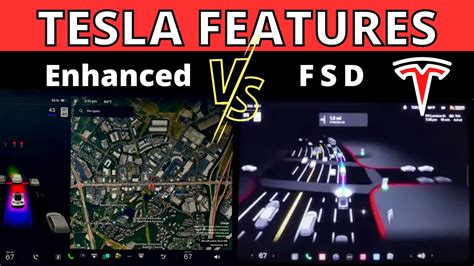The debate surrounding Tesla’s Full Self-Driving (FSD) and Mercedes’ Driver Assist systems has sparked intense discussions within the realm of autonomous vehicles. As user comments dissect the nuances of these technologies, the comparison between the two becomes increasingly intriguing. While some argue that Mercedes’ Driver Assist is limited to SAE Level 2 and tailored for highways, others question the validity of contrasting it with Tesla’s FSD, a system that boasts higher aspirations. The notion of comparing apples to oranges resonates, emphasizing the importance of understanding the distinct features and capabilities of each technology.
One key aspect highlighted in the comments is the difference between Consumer Reports’ evaluation of Mercedes self-driving capabilities and the real-world performance captured in the video. The discrepancy in ratings raises questions about the criteria used for assessment and the practical usability of these systems. It becomes evident that the terminology used, such as ‘Driver Assist’ versus ‘FSD,’ plays a pivotal role in shaping perceptions and setting expectations. This linguistic precision can significantly influence public perception and consumer trust in autonomous driving technologies.
The evolving landscape of autonomous vehicles brings to light the significance of accountability and liability in the event of accidents. The divergent approaches taken by manufacturers such as Tesla and Mercedes in assuming responsibility for system failures underscore fundamental differences in their design philosophies. While Mercedes embraces liability for its Drive Pilot system, Tesla’s stance on accountability raises ethical and legal dilemmas, prompting a deeper exploration of the ethical implications of autonomous driving.
Among the overarching themes in the comments is the role of advanced sensor suites, such as Lidar, in enhancing the safety and reliability of self-driving systems. Discussions on sensor fidelity, data collection, and computational power shed light on the intricate balance between technological prowess and practical implementation. The debate between vision-only approaches and sensor fusion strategies underscores the ongoing quest for optimal sensor configurations that maximize safety and efficiency.
Another intriguing point raised in the comments is the intersection of cultural norms and regulatory frameworks in shaping the development of autonomous driving technologies. The contrast between driving expectations in different regions, such as the US and Australia, highlights the complex interplay between technology, ethics, and societal values. As autonomous vehicles navigate diverse environments, the need for adaptable and context-aware systems becomes increasingly evident.
The ongoing pursuit of human-parity in accident rates sparks a critical examination of the safety benchmarks set for autonomous vehicles. The quest for not just equivalence but surpassing human driving capabilities challenges manufacturers to reevaluate their technological approaches and safety protocols. The articulation of an ‘Operational Design Domain’ (ODD) emerges as a foundational concept in defining the boundaries within which autonomous systems operate, emphasizing the importance of transparency and predictability in their behavior.
As the autonomous driving race intensifies, the role of data acquisition, training methodologies, and validation processes emerges as a crucial differentiator among industry players. The competitive landscape shaped by billions of miles of training data, sophisticated neural networks, and cutting-edge computing infrastructure underscores the pivotal role of data-driven innovation in advancing autonomous technologies. The convergence of AI algorithms, real-world testing, and regulatory compliance sets the stage for a transformative era in transportation.
In conclusion, the discourse surrounding Tesla FSD and Mercedes Driver Assist transcends technical specifications to encompass broader themes of safety, ethics, and innovation. As the quest for autonomous mobility continues to unfold, the diverse perspectives articulated in the comments reflect a rich tapestry of insights and opinions. Navigating the complexities of autonomous driving requires not just technological prowess but also ethical foresight and a commitment to shaping a future where innovation and safety converge seamlessly.


Leave a Reply